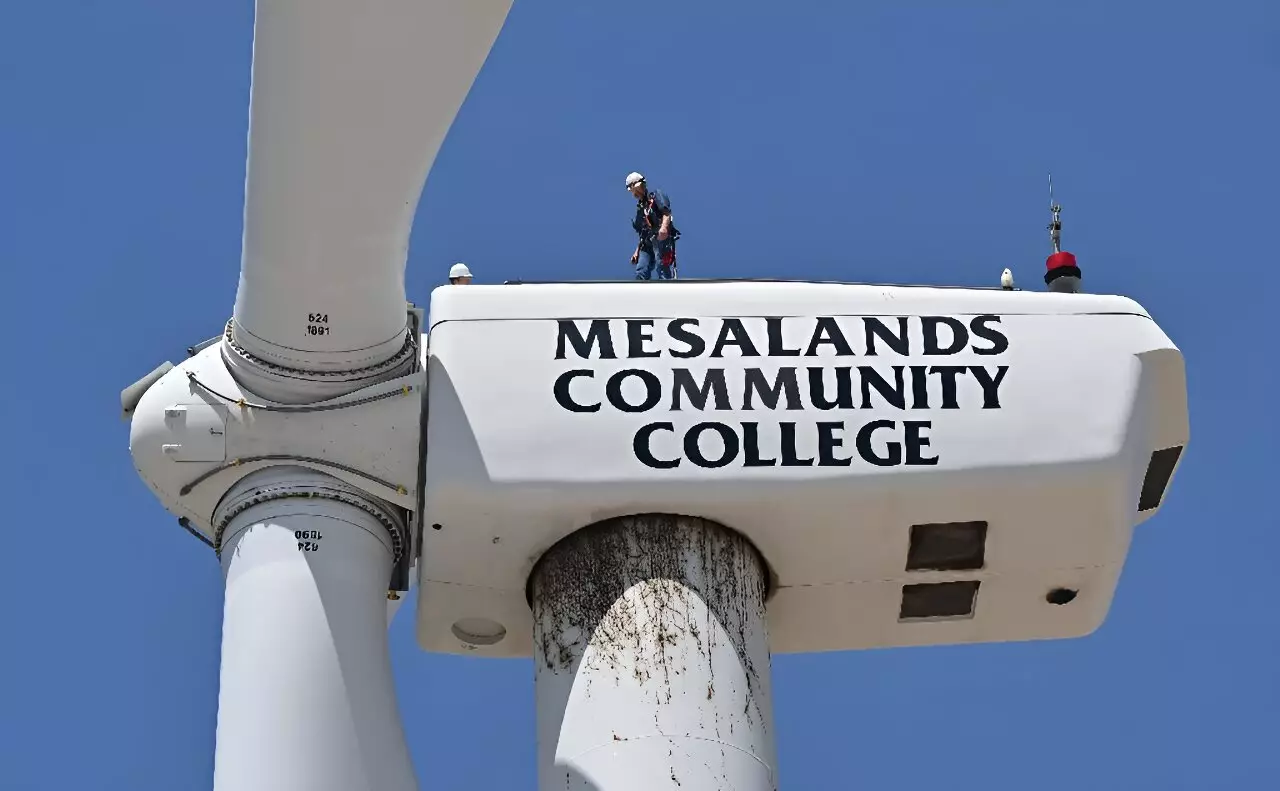Working as a wind turbine technician requires a special kind of bravery and skill, as demonstrated by Terrill Stowe, an instructor at Mesalands Community College in New Mexico. Stowe, who has been in the industry for 14 years, takes his students through rigorous training that entails climbing a 260-rung ladder to the top of a wind turbine, where they can practice in the turbine’s “nacelle,” or engine room.
The wind industry in the United States has experienced exponential growth in the past decade, with around 75,000 large turbines generating enough electricity to power millions of homes. However, this rapid expansion has posed challenges in terms of training an adequate number of skilled technicians to keep up with the demand. Stowe emphasizes the need for more technicians as wind farms continue to be built across the country.
For young men like Nathaniel Alexander and Kevin Blea, becoming wind turbine technicians offers not just the opportunity to work in a booming industry, but also to earn competitive salaries. With a two-year degree that costs $6,000 to $10,000, technicians can make anywhere from $50,000 to $90,000 per year. This financial incentive, combined with a desire to work in a “man’s man’s job,” has attracted many to the field.
Despite the growth of the wind industry in rural areas like eastern New Mexico, there is often reluctance to credit political parties for its success. Alexander and Stowe have differing views on the impact of government incentives, with Alexander acknowledging the benefits of recent tax credits while Stowe believes the industry thrived more under the previous administration. This disparity in opinions reflects the complex relationship between politics and industry growth.
Safety has become a top priority in the wind industry, with significant improvements in working conditions and protocols. Technicians like Stowe and Blea have experienced firsthand the hazards of climbing towers in extreme weather conditions. While the job may come with its challenges, such as lightning strikes and turbulent winds, it also offers unique experiences like witnessing breathtaking views from the top of a turbine.
The wind turbine technician industry is thriving, driven by technological advancements, government incentives, and a growing demand for clean energy. While the job may not be for the faint of heart, individuals like Stowe, Alexander, and Blea are testament to the rewarding nature of working in the wind industry. As the sector continues to expand, the need for skilled technicians will only grow, presenting opportunities for those willing to take on the challenge of such a high-flying career.


Leave a Reply